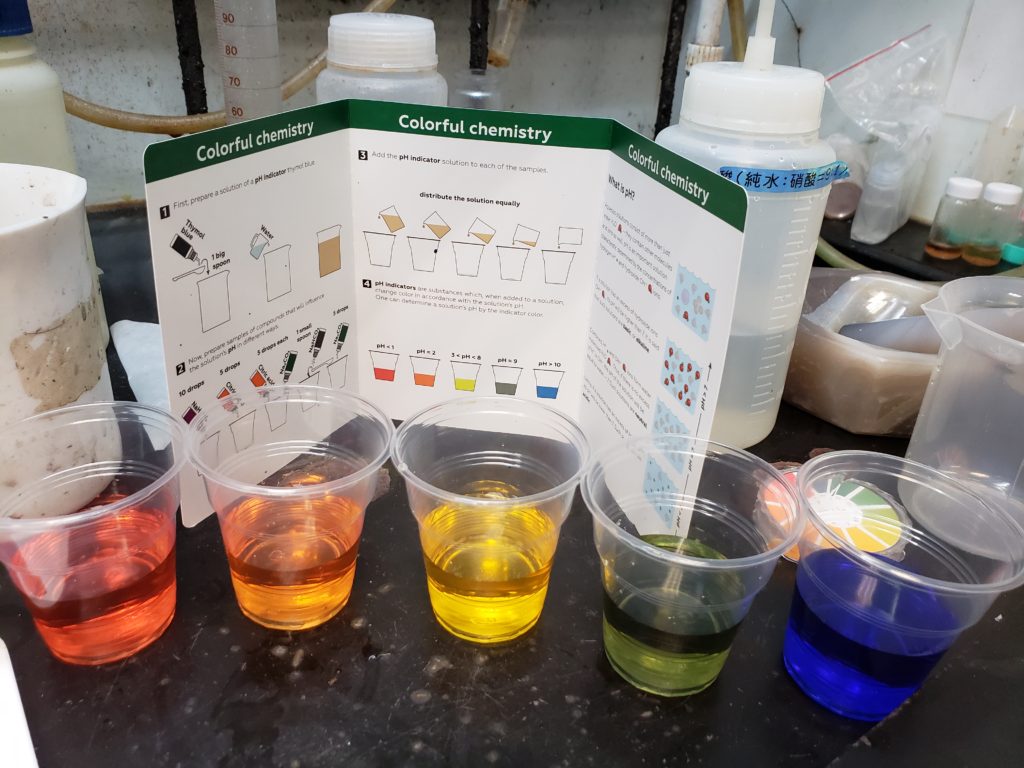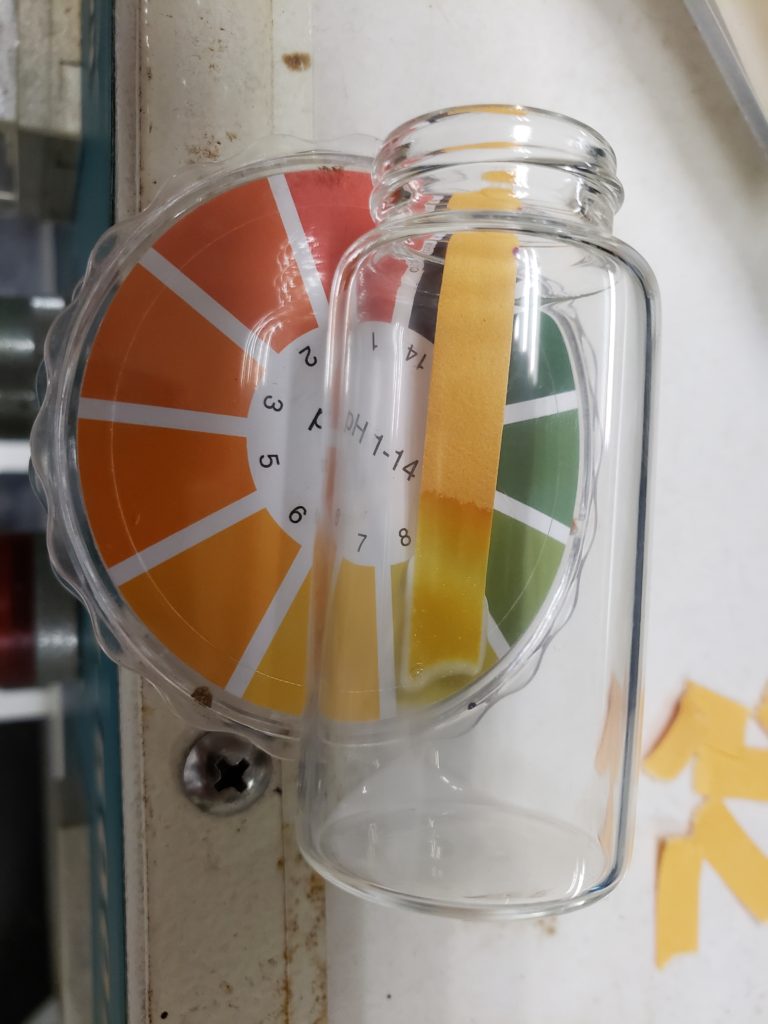The latest Mel Science . Chemistry kit explores color, and pH, in liquids and colorants common in many households. My takeaway from the experiment is that for many liquids, pH is intimately tied to the visible color, as shown in the next figure.

The pH values provide a measure of the proton concentration or the hydrogen, H+, concentration in solution. Water, which consists of two H’s and one oxygen atom, is neutral (that is, H+ predominantly tied to the oxygen in the form of water!). Freely available H+ makes the solution pH lower (or more acidic), while H+ tied to one oxygen in the form of OH- creates a high pH solution (or more basic or alkaline).

As the pH indicator used in this experiment is thymol blue mixed with water, the color is closer to that of the 2nd cup from the right (dark or algae green). The kit provides some chemicals to tune the pH, from left to right, NaHSO4, Citric Acid, Citric Acid + Na2CO3, NaHCO3, Na2CO3. Mixing the list of chemicals with the neutral pH solution gives the colors shown in the cups above because either more H+ or OH- is introduced into the solution by the addition of the chemicals.
Not all chemicals will change the pH of a solution. For example, adding table salt NaCl does not create more H+ or OH-. So water with extra salt still looks like water, just tastes a lot more salty!
This kit also contains colorants to explore mixing in various solutions, such as water or milk. The colorants mix into the milk solution with varying depths, depending on the density of the materials in the mixture. Adding some soap to the solution involves another aspect of molecular chemistry, that is the hydrophilic or hydrophobic tendencies of the molecules. A dab or droplet of liquid soap into the colorful milky solution forces the milk and colorants away symmetrically radially, because the soap creates a “film” right on top of the milk.
Finally, the kit also contains a neat experiment for looking at colorful patterns, due to pH differences, in the methyl blue indicator solution. More videos on their way soon!